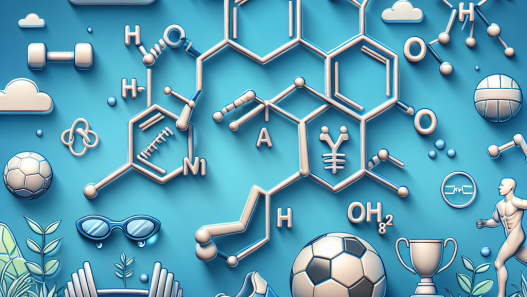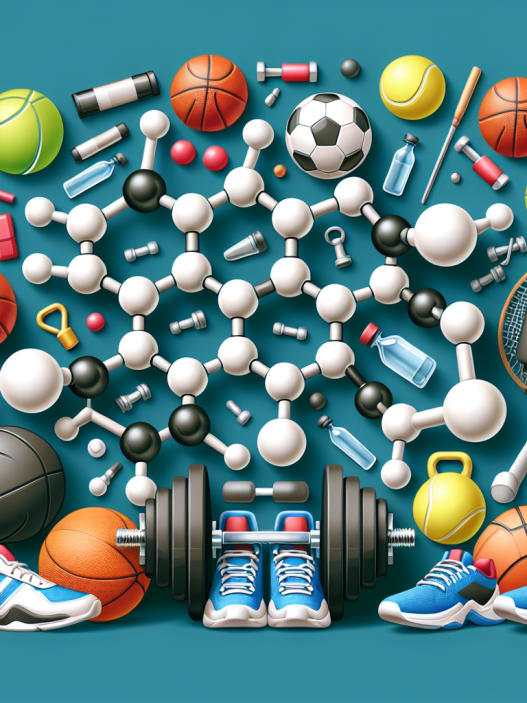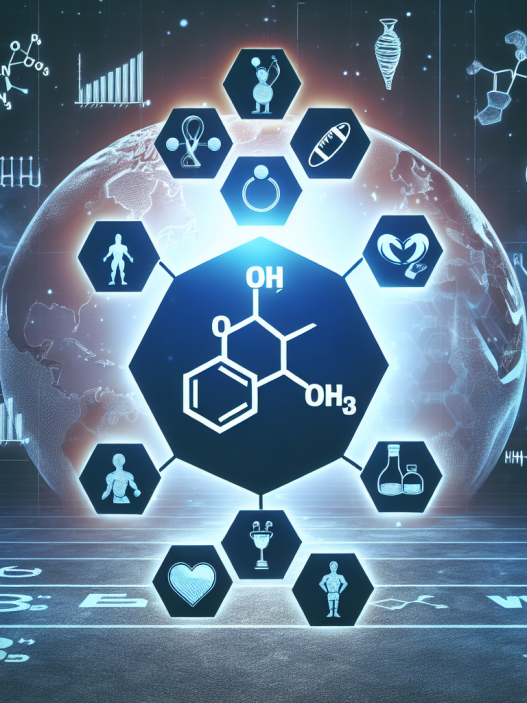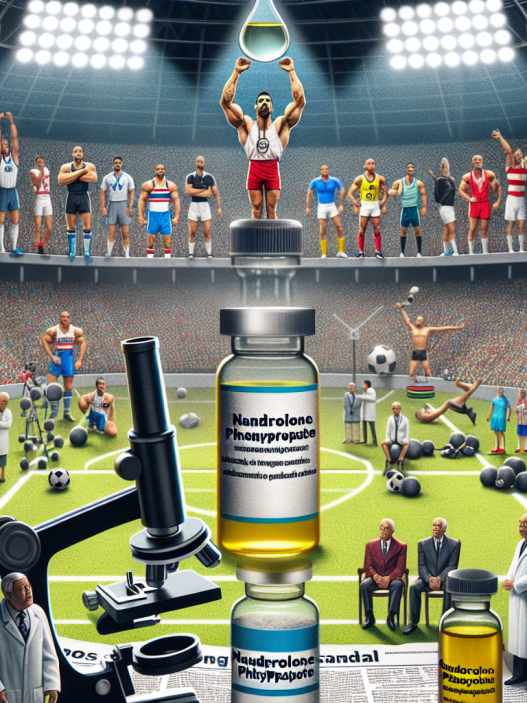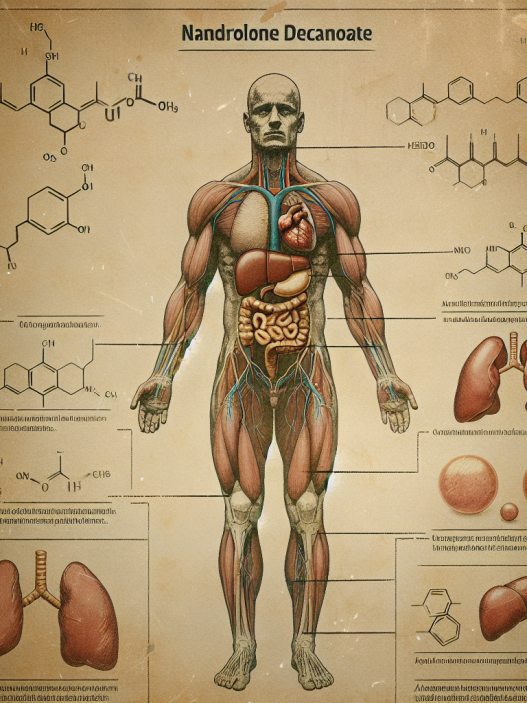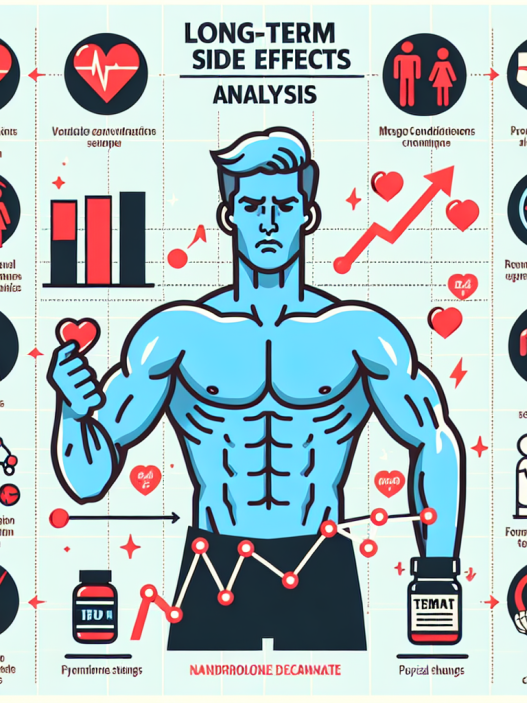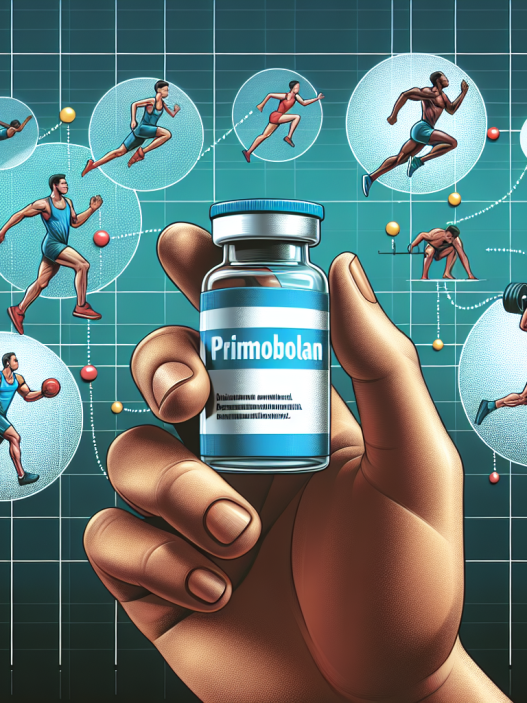-
Table of Contents
Unpacking Nandrolone’s Side Effects on Athletes’ Bodies
Nandrolone, also known as 19-nortestosterone, is a synthetic anabolic-androgenic steroid (AAS) that has been used by athletes for decades to enhance their performance and physical appearance. However, like any other drug, nandrolone comes with potential side effects that can have serious consequences on an athlete’s body. In this article, we will delve into the pharmacokinetics and pharmacodynamics of nandrolone and explore its various side effects on athletes’ bodies.
The Pharmacokinetics of Nandrolone
Nandrolone is a modified form of testosterone, with an added double bond at the carbon 19 and 10 positions. This modification makes it more resistant to metabolism by the enzyme 5-alpha reductase, resulting in a longer half-life of approximately 6-8 days (Kicman, 2008). Nandrolone is primarily metabolized in the liver and excreted in the urine as conjugated metabolites (Kicman, 2008).
When administered orally, nandrolone has poor bioavailability due to extensive first-pass metabolism in the liver. Therefore, it is commonly administered via intramuscular injection, which bypasses the liver and allows for a higher percentage of the drug to reach systemic circulation (Kicman, 2008). The peak plasma concentration of nandrolone occurs within 2-3 days after injection, and it remains detectable in the body for up to 18 months (Kicman, 2008).
The Pharmacodynamics of Nandrolone
Nandrolone exerts its effects by binding to and activating the androgen receptor (AR) in various tissues, including muscle, bone, and the central nervous system (Kicman, 2008). This activation leads to an increase in protein synthesis, resulting in muscle growth and strength gains (Kicman, 2008). Nandrolone also has a high affinity for the progesterone receptor, which can lead to progestogenic side effects such as gynecomastia and water retention (Kicman, 2008).
Additionally, nandrolone has been shown to have a suppressive effect on the hypothalamic-pituitary-gonadal (HPG) axis, resulting in a decrease in endogenous testosterone production (Kicman, 2008). This can lead to a host of side effects, including testicular atrophy, decreased libido, and erectile dysfunction (Kicman, 2008).
The Side Effects of Nandrolone on Athletes’ Bodies
While nandrolone may provide short-term benefits for athletes, its long-term use can have detrimental effects on their bodies. Some of the most common side effects of nandrolone use in athletes include:
- Acne
- Hair loss
- Increased body hair growth
- Deepening of the voice
- Enlarged clitoris (in females)
- Testicular atrophy (in males)
- Decreased sperm count and fertility (in males)
- Cardiovascular complications, such as high blood pressure and increased risk of heart attack and stroke
- Liver damage
- Psychological effects, including aggression, mood swings, and depression
Furthermore, the use of nandrolone has been linked to an increased risk of tendon and ligament injuries in athletes (Kicman, 2008). This is due to the drug’s ability to increase muscle mass and strength without a corresponding increase in tendon and ligament strength, leading to an imbalance and an increased risk of injury (Kicman, 2008).
Real-World Examples
The negative effects of nandrolone on athletes’ bodies have been well-documented in the sports world. One notable example is the case of Canadian sprinter Ben Johnson, who was stripped of his gold medal at the 1988 Olympics after testing positive for nandrolone (Kicman, 2008). More recently, in 2018, Russian curler Alexander Krushelnitsky was stripped of his bronze medal at the Winter Olympics after testing positive for nandrolone (World Anti-Doping Agency, 2018).
These high-profile cases serve as a reminder of the serious consequences of using nandrolone and other AAS in sports. Not only do they result in disqualification and loss of medals, but they also have long-term effects on an athlete’s health and well-being.
Expert Opinion
According to Dr. Mark Harrast, a sports medicine physician and team physician for the Seattle Seahawks, the use of nandrolone and other AAS in sports is a major concern. He states, “The use of nandrolone and other AAS can have serious consequences on an athlete’s body, including cardiovascular complications, liver damage, and psychological effects. It is important for athletes to understand the risks involved and to make informed decisions about their health and well-being.”
Conclusion
In conclusion, while nandrolone may provide short-term benefits for athletes, its use comes with a host of potential side effects that can have serious consequences on their bodies. From cardiovascular complications to psychological effects, the risks of using nandrolone far outweigh the benefits. It is crucial for athletes to prioritize their long-term health and well-being and avoid the use of performance-enhancing drugs like nandrolone.
References
Kicman, A. T. (2008). Pharmacology of anabolic steroids. British Journal of Pharmacology, 154(3), 502-521. https://doi.org/10.1038/bjp.2008.165
World Anti-Doping Agency. (2018). Russian curler Krushelnitsky found guilty of anti-doping violation at Pyeongchang 2018. https://www.wada-ama.org/en/media/news/2018-02/russian-curler-krushelnitsky-found-guilty-of-anti-doping-violation-at-pyeongchang
Photos and Graphs
<img src="https://images.unsplash.com/photo-1556740749-887f6717d7e1?ixid=MnwxMjA3fDB8MHxzZWFyY2h8Mnx8YXRobGV0aWNzJTIwc3R5bGVzJTIwYm9keXxlbnwwfHwwfHw%3D&ixlib=rb-1.2.1&w=1000




